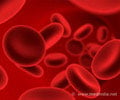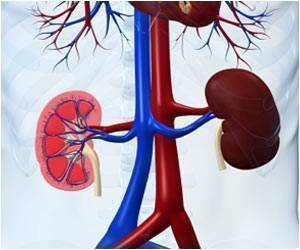NIH scientists have corrected sickle cell disease in adult mice.

The results of the study will appear online Oct. 13 in the journal Science.Sickle cell disease results from an abnormality in hemoglobin, the protein found in red blood cells that is responsible for transporting oxygen throughout the body. People living with sickle cell disease have two copies of an altered gene that produces sickle hemoglobin instead of normal adult hemoglobin. Sickle hemoglobin changes shape after releasing its oxygen, causing the red blood cell to become stiff, misshapen and sticky, and slowing blood flow to tissues. This process damages organs and causes pain. The study tested a new approach to increasing the production of a third form of hemoglobin—fetal hemoglobin. Production of fetal hemoglobin predominates before birth, but turns off thereafter as adult hemoglobin production takes over. People with sickle cell disease are unable to make normal adult hemoglobin, and instead make sickle hemoglobin starting in infancy.
An elevated level of fetal hemoglobin within the red blood cell reduces the tendency of sickle hemoglobin to change the shape of red blood cells. Considerable NIH- supported research has shown that the drug hydroxyurea increases production of fetal hemoglobin and reduces the number of pain crises and other complications of sickle cell disease in adults and children. However, not all patients respond well to hydroxyurea, and adverse side effects are a concern. The current study explores a more targeted approach to increasing fetal hemoglobin production. It builds upon earlier studies by Stuart Orkin, M.D., and his team at Harvard Medical School, Children's Hospital of Boston, and the Howard Hughes Medical Institute, Boston, which discovered that a protein called BCL11A normally suppresses the production of fetal hemoglobin soon after birth. The researchers viewed the BCL11A protein as a target for therapy and decided to see what would happen if they blocked production of the protein. "This important advance in the battle against sickle cell disease is another outstanding example of how great things can happen when work proceeds from bench to bedside, and back to the bench," said Griffin P. Rodgers, M.D., M.A.C.P., director of NIDDK. "We hope that one day, this discovery and any that build upon it will translate into a viable treatment option for those suffering from this devastating illness."The current paper details how the research team silenced the mouse gene that produces the BCL11A protein in mice with sickle cell disease. Silencing the gene turned off production of the BCL11A protein and allowed the adult mice to continue to produce fetal hemoglobin. It appears to have eliminated disease symptoms without affecting other aspects of blood production.Approximately 100,000 Americans live with sickle cell disease. It is most prevalent in people of African, Hispanic, Mediterranean, and Middle Eastern descent. There is no widely available cure for sickle cell disease. Bone marrow transplants have cured some patients, but the treatment is not without risk and most patients do not have relatives who can donate compatible and healthy bone marrow to them.
Source-Eurekalert










